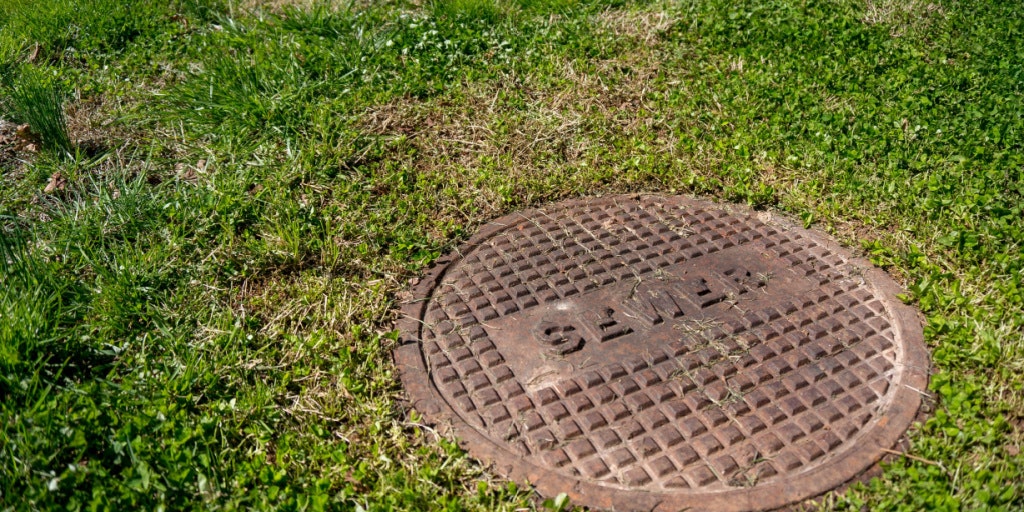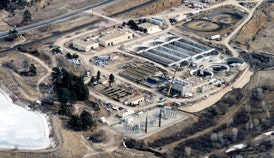Wastewater

Property owners are solely responsible for sewer-line maintenance, repairs, and replacements between the home or commercial property and CPNMD’s main sewer line in the street.
Wastewater, or sanitary sewage, flows from homes and businesses into a system of underground pipes. Every day, 500,000 gallons of wastewater in Castle Pines North is collected at various pumping stations, and sent to the Plum Creek Water Reclamation Authority.
Nine pumping stations or “lift stations”, powered by electric motors, help move wastewater through more than seven miles of the District’s sewer collection system.
In 2008, a 16” force main line was installed to provide additional backup in the event of a break in one of the community’s main lines, to ensure uninterrupted service to customers.
Most of the treated and cleaned water (effluent) is conveyed via an outfall into the East Plum Creek, and ultimately into Chatfield Reservoir, and eventually the South Platte. The cleaned water that is not released into East Plum Creek is recycled and used to irrigate the Ridge at Castle Pines North Golf Course.
Link for wastewater rates.
Plum Creek Water Reclamation Authority

The facility is located south of Happy Canyon Road on Highway 85. PCWRA also treats wastewater flows from CPNMD, Castle Pines Village, and the Town of Castle Rock. Wastewater fees on monthly water bills continue to help the operation and maintenance of the facility and the associated debt on the new plant. Over a period of time, the District will contribute approximately 10 percent of the total cost of an expansion project to increase treatment capacity. The treatment plant was completed in 2005.
Keep Your Sewer Line Clear
Improper disposal of certain items can lead to build-ups that restrict flows through sewer lines and cause blockages and pump failures. When a blockage occurs, wastewater can back up into businesses and houses, and create unpleasant disruptions.
Avoid putting the following items in the sewer; kitty litter, egg shells, coffee grounds, motor oil, lard or cooking oil. These items should be disposed of in the trash.
There are several common products found throughout a household that are considered hazardous chemicals and should never be flushed down the sewer. They include pesticides, nail polish, oven cleaners, spot remover, vehicle fuel, oil or grease, fertilizer, rodent poison, weed killer, paint, varnish, stripper or thinners or battery fluids.
Here are some helpful household tips:
- Don’t dispose of grease down the drain.
- Use baskets or strainers in sink drains to catch food scraps and other solids.
- Scrape grease and food scraps from plates, pots and pans, utensils and grills.
- Pre-wash plates by spraying them off with cold water prior to placing them in the dishwasher.
- Freeze animal fats in a can and put all food waste and discards in a trash container - don’t pour them down the sink, garbage disposal or toilet.
- Garbage disposals use large volumes of water and electricity - reducing or eliminating their use will lower your sewer, water, and power bills.
- Be cautious of chemicals or additives that claim to dissolve grease - these may not be effective.
- Keep fats, oil and grease out of our sewers-help keep our environment clean
- Grease can build up in sewers, restricting the flow of wastewater that comes from our homes. This blockage forces wastewater up onto our streets - where it then enters the storm drain system.
- Don’t put diapers or sanitary napkins in the toilet.
- Don’t plant trees near sewer lines. Their roots may grow through cracks in the lines and cause a blockage.
Property owners are solely responsible for sewer-line maintenance, repairs, and replacements between the home or commercial property and CPNMD’s main sewer line in the street.
